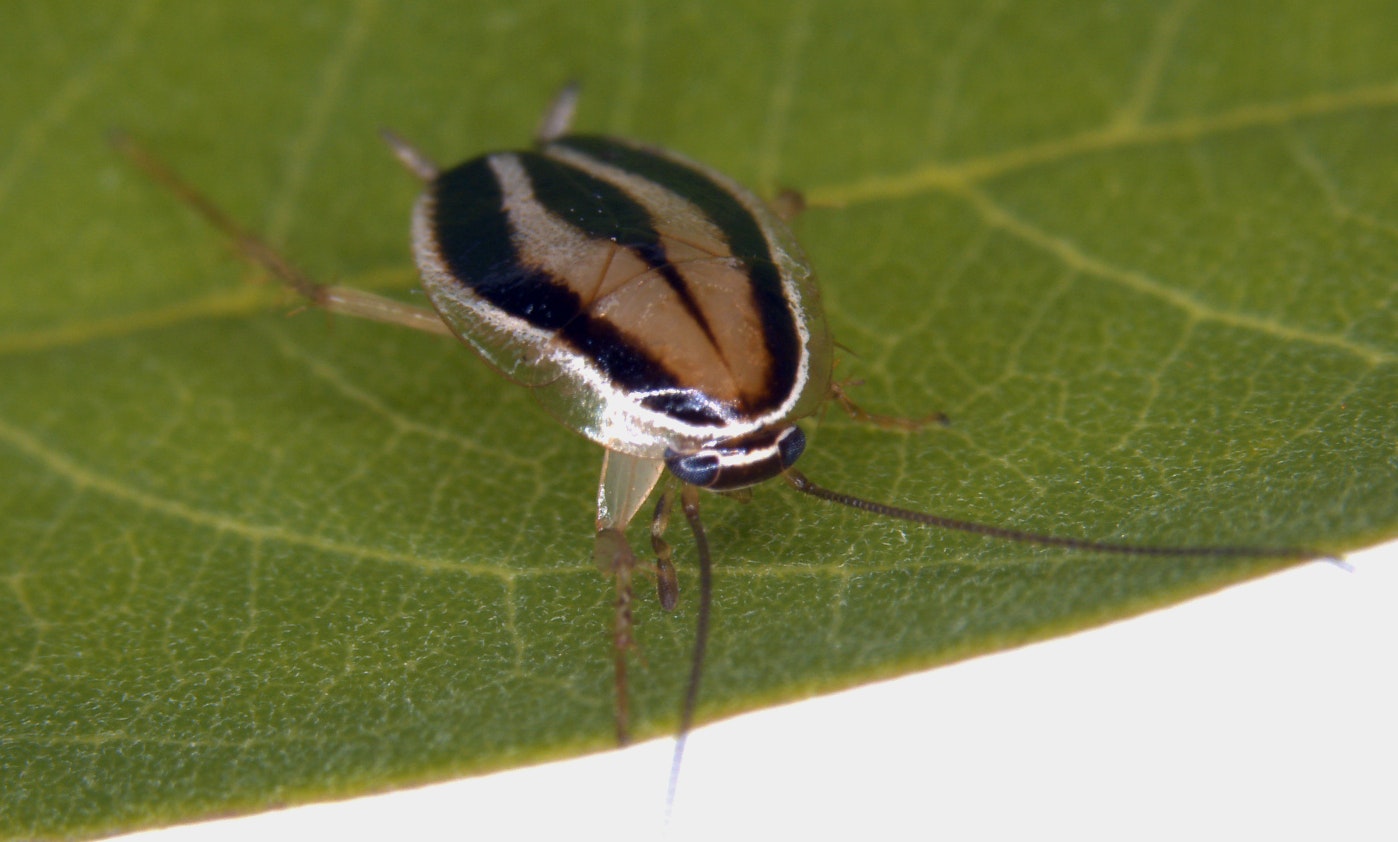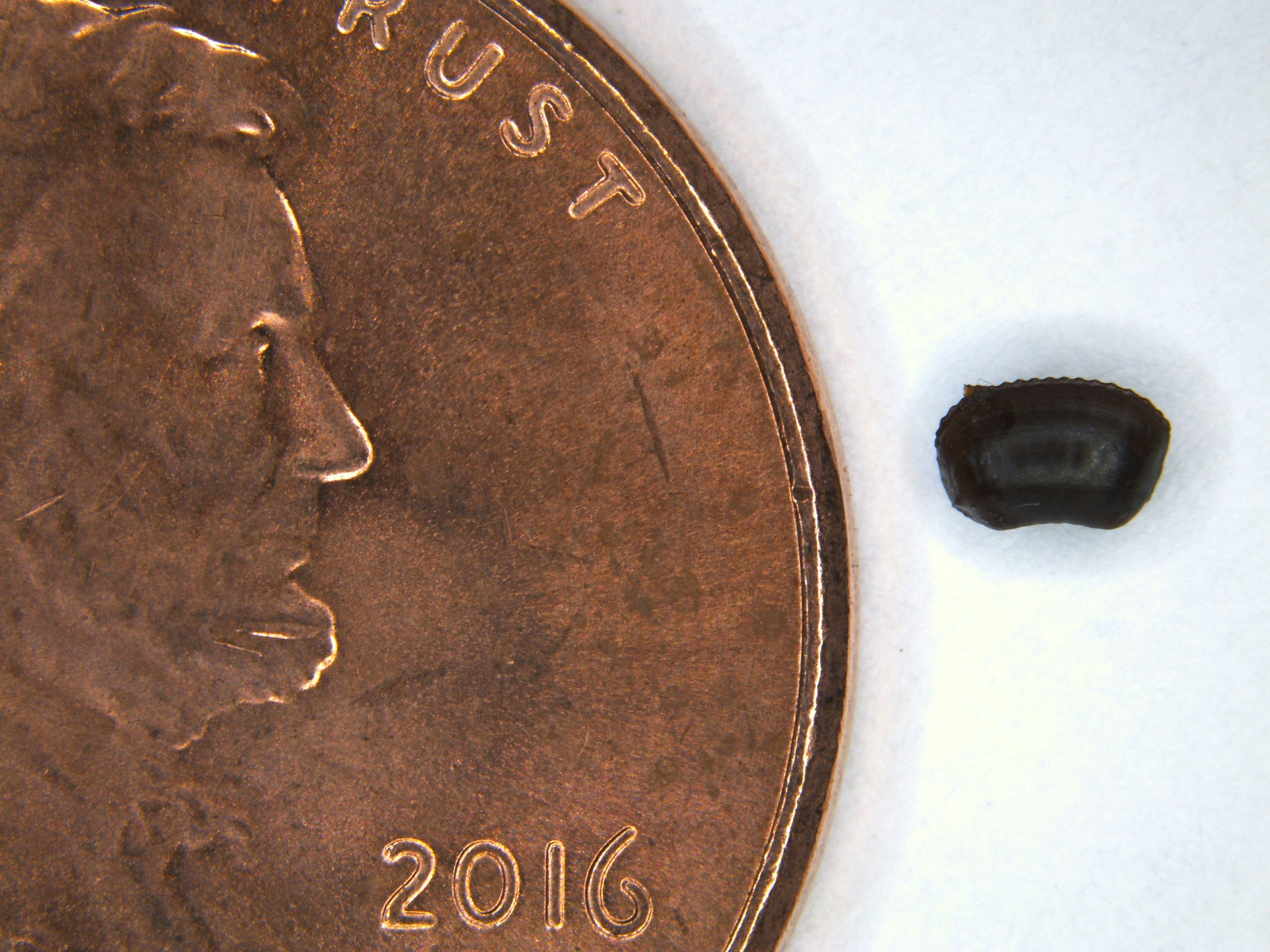Three-lined roach

Scientific name: Luridiblatta trivittata
Size: Approx. 5 mm long (body length)
Where found: In the kitchen
One summer evening in 2011, my wife caught a small insect scurrying around the kitchen floor. I took a quick look and immediately transformed into a cockroach-hunting/cleaning maniac. The critter resembled a German cockroach nymph, which is a major pest species that is thought to be capable of spreading a slew of disease-causing organisms—YIKES! The ensuing cleaning rampage continued deep into the night, but we were unable to find another roach or any evidence of an infestation.
The next day, bleary eyed, I took a peek at the invader under the microscope. Our specimen looked a little different than the German cockroach nymphs I had seen before, as it had three stripes instead of two. With help from a California Pest and Disease Report, we were able to determine that we were looking at Luridiblatta trivittata, a species only known to exist in California since 2004, and one that (still) does not have an “official” common name. I use “three-lined roach” because it is descriptive, but you may also find mention of it by other names on online forums.
Every summer since, residents bring this species into our office, and the story is always nearly the same: “I caught one in the kitchen/bathroom/garage, and another in the kitchen/bathroom/garage. Are they cockroaches? Are they bed bugs? Are they going to infest the entire house?!?” Here’s what we’ve learned about this species over the past few years:
- They are originally from the Mediterranean region of Europe, and are now common in certain parts of Northern California.
- Unlike German cockroaches, they are not known to form colonies indoors. Instead, they may be extremely abundant outdoors, especially in areas with plant-based mulches, and they wander indoors, likely in search of food or moisture.
- They are attracted to sweets (I’ve caught them in yellowjacket traps that were baited with juice, and found them at night on overripe fruit in the garden).
- They do not get very big.
- You will not notice them during the winter, and it’s unlikely that you’ll notice them in the spring, because the nymphs (immature stage) are really, really small.
- There are no products available (traps, baits, etc.) that are marketed specifically for this species.
- There is very little information about these roaches online.
- It is probably impossible to completely exclude them from your home.
So if you find one inside, do you need to tear the kitchen apart in a mad cleaning frenzy? Probably not, but when was the last time you cleaned under the fridge?
Still concerned? Check out the UC IPM pest notes page on cockroaches. It does not mention this species specifically, but it has a section that provides tips for making your dwelling less hospitable to cockroaches, as well as detailed information about more problematic species of roaches.

